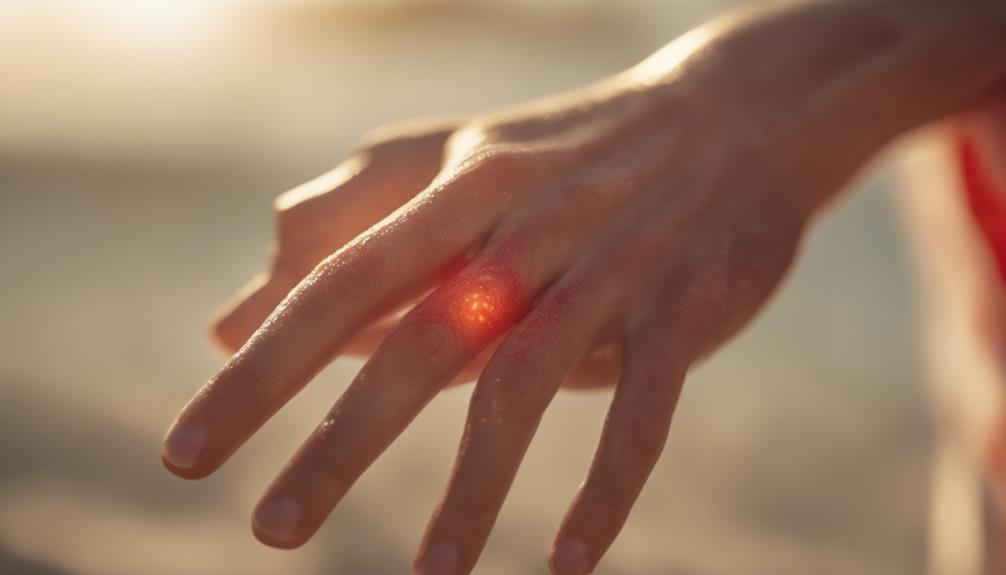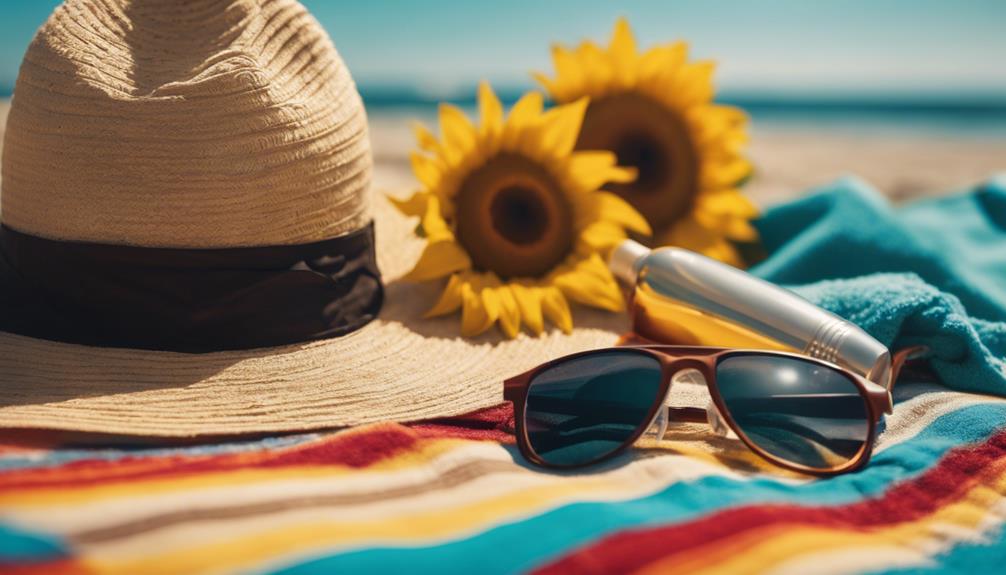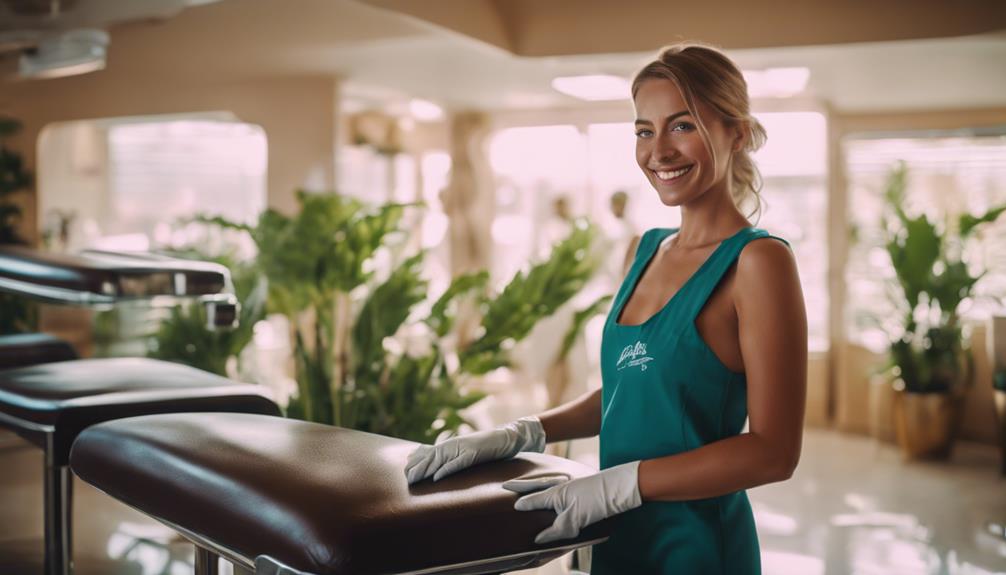When it comes to burning versus tanning, understanding your skin type is key. Fair skin easily burns due to low melanin levels, while darker skin provides more natural UV protection. Tanning occurs as your skin responds to UV exposure, but it's still crucial to use sunscreen, as both burning and tanning can lead to long-term damage. Misbeliefs about tanning can worsen risks, so it's important to prioritize sun safety. By knowing these distinctions and practicing good sun habits, you can protect your skin more effectively. Stick around to uncover more insights and strategies for safe sun exposure!
Key Takeaways
- Tanning is the skin's response to UV exposure, while burning indicates overexposure and damage to skin cells.
- Melanin production varies among skin types, affecting how individuals tan or burn; darker skin types have more natural protection.
- Myths suggest a base tan offers protection, but it provides minimal defense against sunburn and skin damage.
- Regular use of broad-spectrum SPF 30+ sunscreen is crucial to prevent both tanning and burning, regardless of skin type.
Skin Types and Melanin Insights
How well do you understand your skin type and the role melanin plays in protecting you from sun damage?
Your skin type, categorized by the Fitzpatrick scale, ranges from Type 1, which burns easily, to Type 6, which is rich in melanin and less prone to burning.
If you have fair skin, you might find yourself freckling and burning quickly. Conversely, darker skin types have more melanin, providing a natural defense against UV rays.
However, it's essential to remember that all skin types need sun protection.
Melanin production is genetic, so understanding your skin type and melanin levels helps you adopt effective sun safety practices, ensuring your skin stays healthy and protected throughout the year.
Understanding UV Radiation
UV radiation plays a significant role in skin health, as it causes both tanning and burning, depending on your skin type and exposure levels. Understanding how UV rays affect your skin is essential for protecting your health.
| Effect | Emotion Triggered |
|---|---|
| Tanning | Pride in bronzed skin |
| Burning | Fear of skin damage |
| Skin Cancer | Anxiety about health |
| Premature Aging | Sadness over youth lost |
| Sun Safety | Empowerment through knowledge |
While melanin provides some protection, overexposure can lead to serious damage. Always use sunscreen, especially with SPF 30 or higher, to guard against harmful UV rays. Your skin deserves the best care!
Tanning Myths Debunked

Many people believe common myths about tanning that can lead to harmful practices and increased skin damage.
One prevalent myth is that a base tan protects you from sunburn. In reality, a base tan offers minimal protection, and relying on it can lead to severe skin damage.
Another misconception is that tanning beds are safer than sun exposure. However, they emit UV radiation that greatly increases your risk of skin cancer, just like the sun.
Additionally, some think that all skin types can tan without consequences. This isn't true; everyone, regardless of skin type, needs to prioritize sun safety.
Skin Damage Prevention
Protecting your skin from damage requires proactive measures, including the consistent use of sunscreen and avoiding peak sun exposure hours. Here are some essential tips to keep in mind:
| Action | Recommendation | Reason |
|---|---|---|
| Use Sunscreen | SPF 30+ every 2 hours | Prevents UV damage |
| Avoid Peak Hours | 10 a.m. – 4 p.m. | Reduces direct sun exposure |
| Wear Protective Gear | Hats & UV-blocking sunglasses | Shields skin from harmful rays |
Engaging in these practices not only enhances your skin's health but also minimizes the risk of premature aging and skin cancer. Remember, consistent care is vital for maintaining your skin's integrity and appearance.
Safe Tanning Techniques
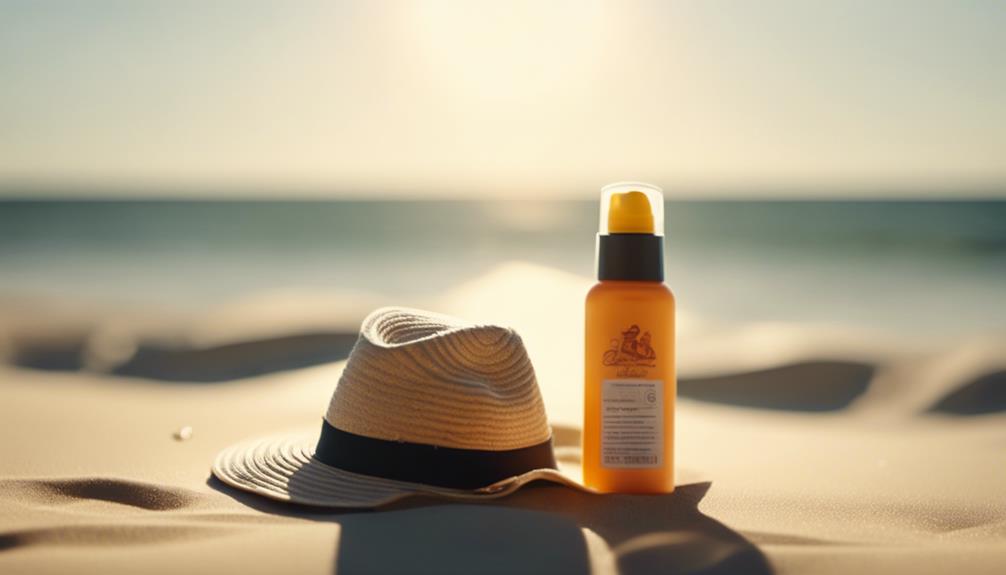
Achieving a beautiful tan without risking your skin's health requires understanding safe tanning techniques that prioritize protection and care.
Start by knowing your skin type; this helps you choose the right approach. Always avoid sun exposure during peak hours, specifically between 10 a.m. and 4 p.m., when UV rays are strongest.
Opt for self-tanners or bronzers for a sun-kissed look without the risks of UV damage. If you do sunbathe, wear protective clothing and accessories like hats and sunglasses.
Don't forget to hydrate your skin before and after tanning, as well as take regular skin self-exams to catch potential issues early.
Taking these steps guarantees you can enjoy a tan while keeping your skin healthy and safe.
The Role of Sunscreen
Sunscreen serves as your first line of defense against harmful UV rays, essential for maintaining healthy skin while enjoying the outdoors.
Applying a broad-spectrum sunscreen with at least SPF 30 is vital, as it protects against both UVA and UVB rays. Remember to apply it generously and reapply every two hours, or more frequently if you're swimming or sweating.
Even on cloudy days, up to 80% of UV rays can penetrate through clouds, making daily use important. Don't forget to cover all exposed skin, including often-missed areas like your ears, neck, and the tops of your feet.
Combining sunscreen with protective clothing and seeking shade during peak hours enhances your skin's safety, keeping it healthy and radiant under the sun.
Individual Responses to Sun Exposure
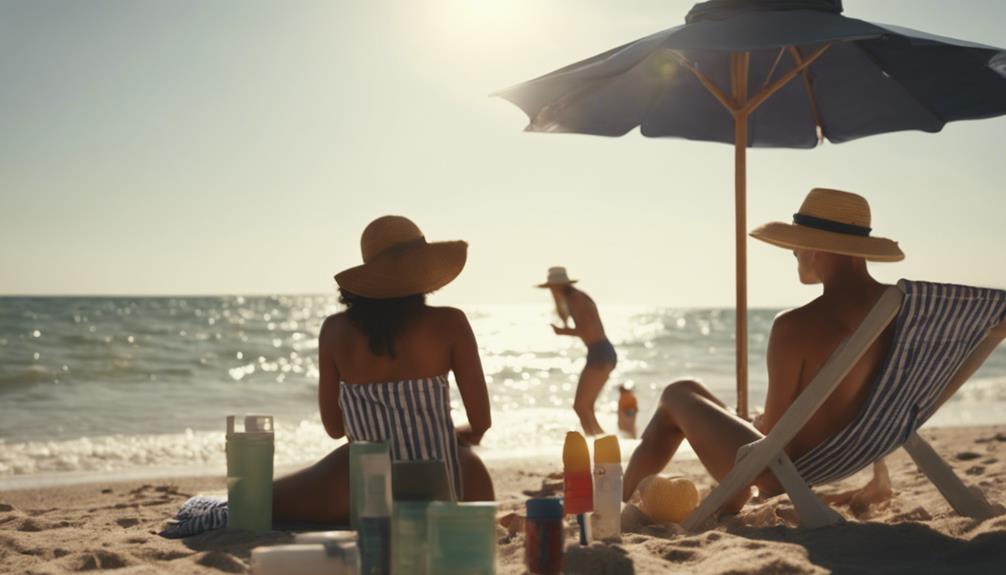
Understanding how your skin reacts to sun exposure can help you make informed decisions about protecting yourself from harm. Your skin type plays a vital role in how you respond to UV rays.
| Skin Type | Response to Sun Exposure |
|---|---|
| Type 1 | Burns easily, rarely tans |
| Type 3 | Tans gradually, may burn |
| Type 6 | Rarely burns, tans deeply |
Each type requires tailored sun protection strategies. For instance, if you have Type 1 skin, you should prioritize high SPF sunscreen and limit sun exposure. Conversely, Type 6 individuals might need less frequent application but still require protection. Understanding your skin's unique response empowers you to enjoy the sun safely while minimizing risks.
Frequently Asked Questions
Can Certain Foods Enhance My Natural Sun Protection?
Certain foods, rich in antioxidants like vitamins C and E, can boost your skin's natural defenses against UV damage. Including berries, nuts, and leafy greens in your diet helps enhance your sun protection.
How Does Hydration Affect My Skin's Reaction to the Sun?
Think of hydration as your skin's trusted ally against the sun. When you stay well-hydrated, your skin maintains its resilience, helping it respond better to UV exposure and minimizing the chances of damage and discomfort.
What Role Does Genetics Play in Tanning Ability?
Genetics greatly influences your tanning ability, determining how much melanin your skin produces. If your ancestors tanned easily, you likely will too, but everyone should take precautions to protect their skin from UV damage.
Are There Specific Vitamins That Help With Sun Damage Recovery?
Yes, vitamins like C and E can help your skin recover from sun damage. They support collagen production and act as antioxidants, reducing inflammation and promoting healing. Don't forget to include them in your skincare routine!
How Can Outdoor Activities Impact My Tanning Results?
Outdoor activities can supercharge your tanning results, turning you into a bronze god or goddess! Just remember, overexposure can lead to burns, so balance fun in the sun with proper protection for stunning, safe color.
Conclusion
As you step into the sunlight, remember that the quest for that golden glow can lead you down a treacherous path, much like Icarus soaring too close to the sun.
Embrace your skin's natural defenses and respect its limits. By understanding the difference between burning and tanning, you can navigate sun exposure wisely.
Prioritize your skin's health over fleeting aesthetics—after all, a radiant complexion is best achieved through care, not recklessness. Your skin will thank you for it!

